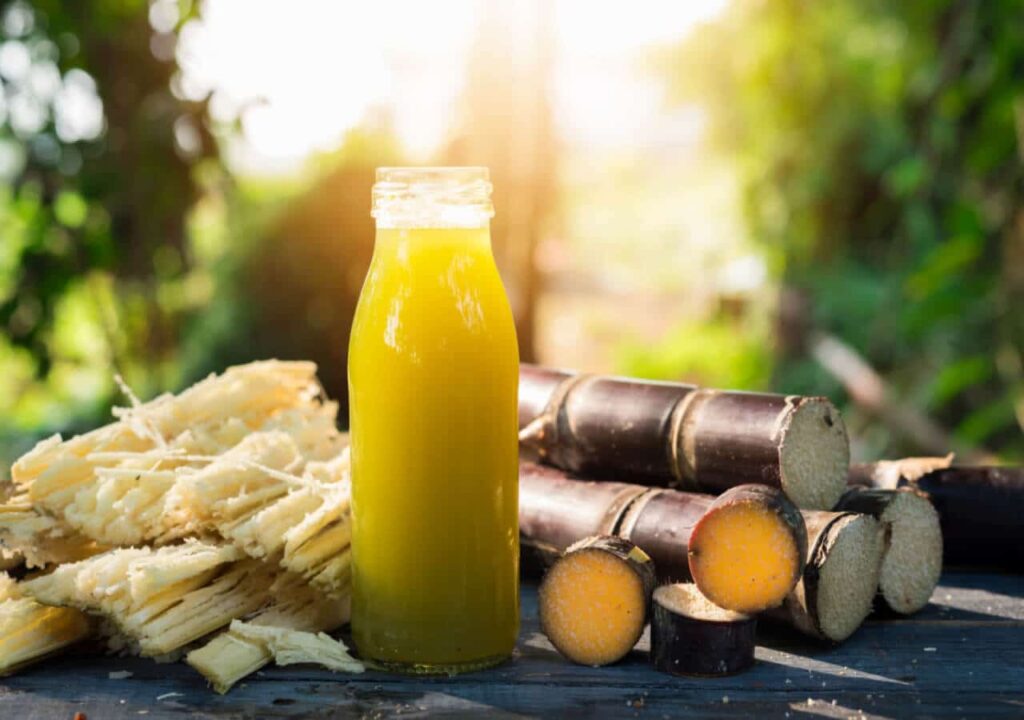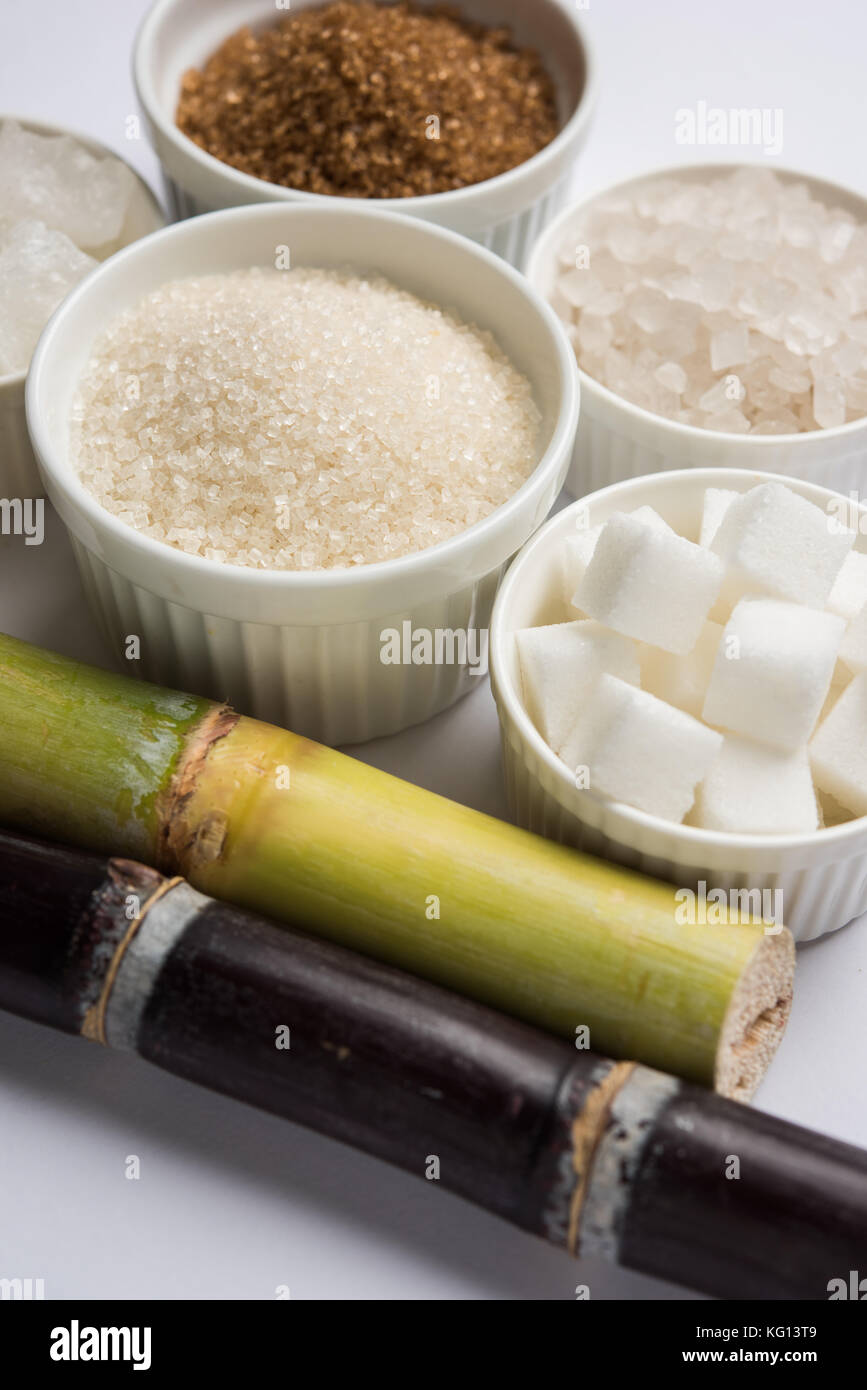Beyond the Kitchen: Diverse Uses of sugar cane products
Discover Everything About Sugar Cane: From Production Methods to Item Innovations
Sugar cane is a plant with both historic significance and contemporary significance. Its growing has progressed from traditional techniques to modern-day techniques that meet today's agricultural needs. This development includes ingenious handling methods that transform the cane right into a variety of products. As the sector encounters environmental difficulties, new sustainable methods are arising. The intricacies of sugar cane manufacturing and its future in global markets existing intriguing questions worth exploring further.
The History of Sugar Cane Growing
Although sugar cane is typically related to exotic climates, its growing has an abundant history that goes back hundreds of years. Coming From Southeast Asia, the earliest records of sugar cane's usage go back to around 8000 BCE, where it was eaten for its sweetness. By the very first millennium, it spread out to India, where it ended up being integral to neighborhood societies. The technology to take shape sugar emerged in India by the fifth century CE, marking a considerable turning point in sugar production.With the growth of trade paths, sugar cane located its method to the Center East and, eventually, Europe. The facility of ranches in the Caribbean throughout the 16th century changed the international sugar market, driven mostly by early american development. As sugar became a popular commodity, its farming shaped economic climates and cultures, preparing for modern manufacturing methods that evolved with the development of agriculture and innovation.
Traditional Farming Methods
As sugar cane cultivation developed via history, standard farming methods became fundamental methods that formed its manufacturing. These methods, typically passed down via generations, consisted of using guidebook tools such as hoes and machetes for growing and collecting. Farmers generally prepared the dirt by hand, making use of crop rotation and intercropping to preserve soil fertility and control parasites. Water management was necessary, with numerous typical farmers depending on all-natural irrigation systems and rainwater harvesting.Planting was most of the time to accompany seasonal rainfalls, ensuring optimal development problems. Generally, sugar cane was grown in rows, permitting easier maintenance and harvesting. Collecting was done manually, requiring proficient labor to lessen damage to the stalks. Generally, conventional farming techniques stressed sustainability and a deep understanding of the regional atmosphere, developing an essential part of the social heritage bordering sugar cane agriculture. These methods prepared for future innovations in sugar production.
Modern Agricultural Practices
Modern agricultural techniques have increasingly incorporated precision farming methods to boost sugar cane production. sugar cane products. These techniques utilize data-driven methods to enhance inputs and improve yields while lessening environmental influence. In addition, lasting bug administration approaches are being taken on to secure plants without endangering environmental balance
Precision Farming Strategies
Accuracy farming techniques stand for a transformative approach to farming, leveraging innovation to boost productivity and sustainability in sugar cane production. By using tools such as GPS, remote sensing, and information analytics, farmers can monitor plant health, soil problems, and water use with unmatched accuracy. This data-driven strategy permits targeted treatments, reducing waste and optimizing source allotment. Drones and satellite imagery help with real-time assessments, enabling farmers to react quickly to arising concerns or modifications in ecological problems. Furthermore, precision farming enhances yield projecting and enhances decision-making processes, ultimately leading to far better plant administration. Because of this, sugar cane producers can attain greater efficiency and earnings while minimizing their environmental impact, adding to the total improvement of modern agricultural techniques.

Lasting Pest Administration
Reliable administration of pests is essential for maintaining the health and productivity of sugar cane plants. Sustainable pest management methods focus on decreasing chemical inputs while optimizing eco-friendly equilibrium. sugar cane products. Integrated Pest Monitoring (IPM) is a prominent technique, integrating biological control, environment control, and the usage of immune sugar cane ranges. Farmers are increasingly employing beneficial insects and all-natural predators to subdue parasite populaces, reducing reliance on artificial chemicals. Monitoring bug levels through traps and hunting enables timely treatments, ensuring that control steps are used just when necessary. In addition, plant rotation and intercropping boost biodiversity, additional diminishing insect episodes. By embracing these lasting techniques, sugar cane manufacturers can preserve crop return while advertising ecological stewardship and reducing the unfavorable impacts linked with traditional insect control approaches
Handling Sugar Cane: From Field to Manufacturing facility
The complex trip of sugar cane from field to factory involves numerous essential actions that transform this vibrant plant into a basic material for sugar production. After gathering, sugar cane is quickly transferred to the handling facility to read lessen sucrose loss. The primary step at the manufacturing facility is cleaning the cane to get rid of impurities, adhered to by crushing to remove the juice. This juice undertakes information, where it is heated and treated with lime to get rid of solid fragments and impurities.Once cleared up, the juice is focused with evaporation, causing syrup. The syrup is after that crystallized by cooling and including seed crystals, bring about the formation of sugar crystals. Adhering to condensation, the sugar goes through centrifugation to separate it from molasses. Inevitably, the sugar is dried, packaged, and prepared for circulation. Each action in this process is vital for making sure the high quality and performance of sugar production.
Sugar Cane Products and Their Applications

Sweeteners and Natural Sugars
Although frequently ignored, sweeteners and natural sugars obtained from sugar cane play an essential function in the food and beverage industry. These products, consisting of sucrose, molasses, and raw sugar, offer a series of flavors and functionalities that improve different food things. Sucrose, the most typical sugar, is commonly made use of for its sweetening buildings, while molasses contributes deepness and intricacy to baked products and sauces. Natural sugars from sugar cane are favored for their minimal handling and regarded health and wellness advantages compared to fabricated sugar. Furthermore, technologies in sugar cane handling have actually brought about alternatives like fluid sugar and focused cane juice, accommodating diverse consumer preferences. In general, sugar cane-derived sweeteners are integral to flavor, protecting, and improving food experiences.
Biofuels and Renewable Energy

Sustainability in power production has actually progressively turned focus to sugar cane as a sensible resource for biofuels. This tropical plant, abundant in sucrose, can be converted right into ethanol, a sustainable fuel that lowers greenhouse gas discharges compared to nonrenewable fuel sources. The fermentation process utilizes molasses, a byproduct of sugar manufacturing, maximizing source efficiency. Sugar cane's biomass, including bagasse and leaves, can be transformed into bioenergy, adding to a round economic climate. Numerous developments in handling methods boost the return of biofuels, making sugar cane an eye-catching alternative for power diversification. In addition, the expanding demand for sustainable power resources drives research into boosting cultivation techniques and lowering the carbon footprint of biofuel manufacturing, positioning sugar cane as a principal in the renewable resource landscape.
Advancements in Sugar Cane Sustainability
As the worldwide need for sugar rises, advancements in sugar cane sustainability have actually come to be important to fulfill both environmental and economic difficulties. Modern agricultural techniques are being implemented to reduce water use, improve soil health and wellness, and lessen chemical inputs. Techniques such as precision agriculture use information analytics and modern technology to enhance source usage and rise plant returns sustainably.Additionally, the development of genetically customized sugar cane varieties aims to boost resistance to pests and ecological stress factors, bring about higher productivity with less inputs. Waste management methods are additionally progressing; byproducts from sugar cane handling are being transformed right into bioenergy, minimizing dependence on fossil fuels.Furthermore, partnerships in between farming stakeholders and environmental companies are fostering practices that advertise biodiversity and environment health. These developments not only aid mitigate the ecological effect of sugar cane production yet also create an extra durable and lasting market for the future.
The Future of Sugar Cane in Global Markets
While worldwide sugar usage continues click for more info to climb, the future click reference of sugar cane in worldwide markets deals with both opportunities and obstacles. The increasing need for biofuels and sustainable items offers a substantial possibility for sugar cane producers, as the plant can be used for ethanol manufacturing and various other environment-friendly options. Furthermore, technologies in handling strategies may enhance effectiveness and minimize prices, making sugar cane extra affordable versus other sweeteners.However, obstacles such as environment change, varying market value, and changing consumer choices toward much healthier alternatives make complex the landscape. In addition, trade plans and tariffs can affect the worldwide market characteristics, affecting farmers' productivity. As stakeholders navigate these complexities, cooperation amongst manufacturers, governments, and researchers will certainly be crucial in adjusting to the evolving market. The future of sugar cane rests on stabilizing these chances and challenges to safeguard its area in a rapidly changing international economic climate.
Often Asked Questions
How Does Sugar Cane Effect Resident Ecosystems and Biodiversity?
The farming of sugar cane considerably affects regional communities and biodiversity. Monoculture practices can cause environment devastation, while pesticide use might damage non-target species, eventually interrupting ecological balance and lowering species richness in affected areas.
What Are the Wellness Consequences of Consuming Sugar Cane Products?
The health effects of consuming sugar cane items consist of possible benefits like energy boosts and antioxidants, but too much intake might bring about weight gain, dental issues, and increased risk of diabetic issues, urging moderation in intake.
Are There Any Type Of Alternatives to Sugar Cane for Sugar Manufacturing?
Alternatives to sugar cane for sugar manufacturing include sugar beetroot, maple sap, and coconut hand sap. These resources offer similar sweetness and can be grown in different environments, supplying diverse choices for sugar production worldwide.
Exactly How Is Sugar Cane Impacted by Environment Adjustment?
Environment adjustment considerably affects sugar cane, triggering altered rains patterns, boosted temperature levels, and enhanced insect pressures. These elements can lower yields and affect total high quality, triggering the demand for flexible farming methods to guarantee sustainability.
What Are the Labor Problems for Sugar Cane Workers Internationally?
Labor problems for sugar cane employees internationally differ considerably, commonly defined by low wages, long hours, and inadequate precaution. Lots of face exploitation and extreme workplace, especially in establishing nations reliant on sugar cane manufacturing.